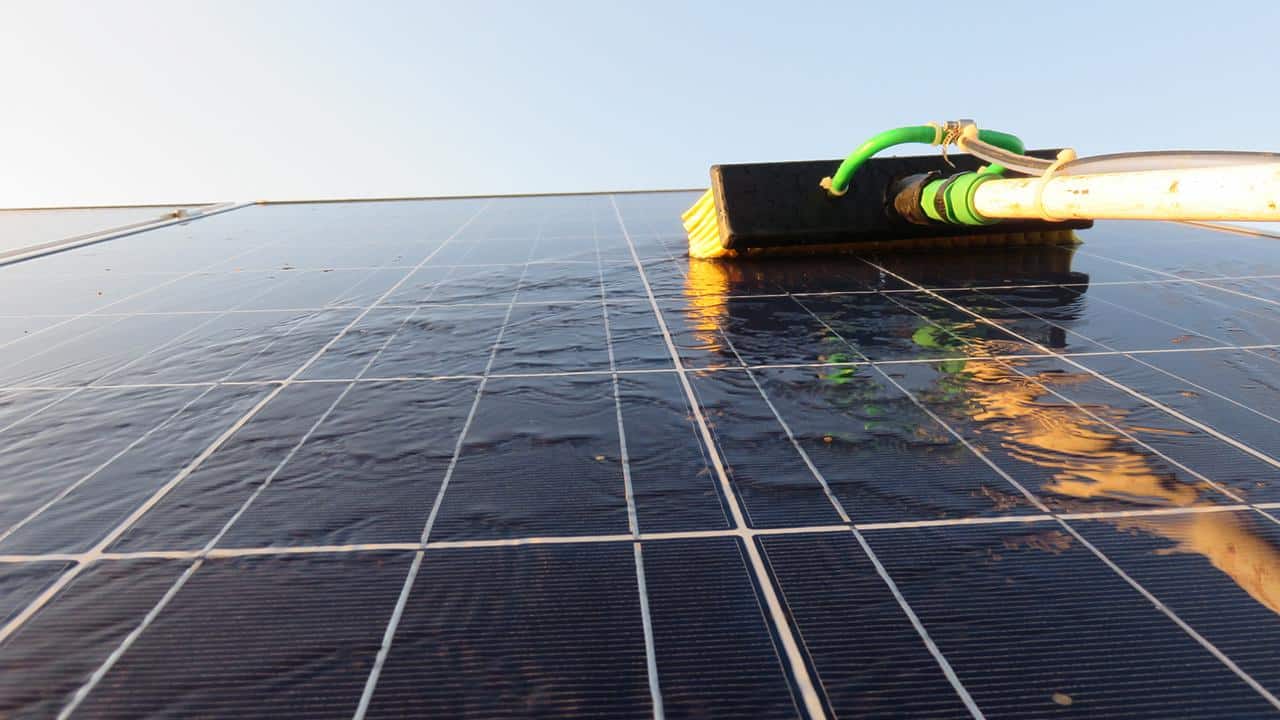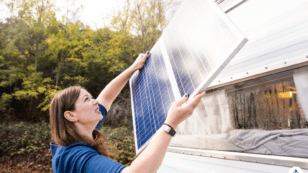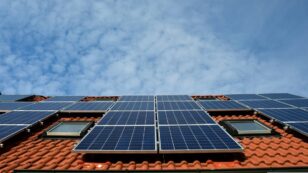

How to Fix Underperforming Solar Panels 2024
Each product and or company featured here has been independently selected by the writer. You can learn more about our review methodology here. If you make a purchase using the links included, we may earn commission.
Solar panels offer an excellent return on investment, and the savings you can expect over their 25- to 30-year service lives are much higher than their upfront costs. However, there are some performance issues that can affect solar panels, and they will undermine your savings if left unattended. Fortunately, most of these problems are relatively easy to solve, and major issues are covered by a warranty if you purchase high-quality solar panels.
In this article, we will discuss some common issues that may affect solar power systems, as well as how to solve them. By making sure that your solar panels stay productive, you get consistent savings each month and can shorten your solar panel payback period.
Common Issues That May Lower Solar Panel Output
When the electricity output of solar panels is lower than normal, there are many possible causes. However, the following are some of the most common:
| Solar Panel Output Issue | Issue Description |
|---|---|
| Dust and dirt | Dust and dirt can accumulate on the surface of solar panels, partially blocking sunlight and decreasing their energy output. |
| Pollen | Pollen can have the same effect as dirt and dust during the flowering season of plants. |
| Cloudy weather | Although solar panels work on cloudy days, they do so at a much lower production rate. |
| Shade from trees | Your solar panels may be covered by shadows from trees that were shorter when you installed the system. |
| Shade from new constructions | Shadows from new constructions can also block the sunlight received by your panels. However, most states offer legal protection with solar easements. When you have an easement, neighbors can’t build structures that block your solar system. |
| Disconnected components | Solar systems use plenty of wiring, and components can get disconnected by accident. |
| Malfunctioning components | If there’s an issue with any part of your system — solar panels, wiring, circuit breakers, inverters, batteries, etc. — it can lead to a reduced panel output. |
| Seasonal variation | Solar panels generate more electricity during summer. |
| Gradual efficiency loss | Even the most efficient solar panels become less productive over time, but this happens at a very slow rate. The annual productivity loss is normally less than 0.5%. |
| Monitoring errors | If you’re experiencing what seems like a low output, there’s a chance the panels are functioning normally but you have an issue with your monitoring system. |
It’s important to understand that solar panels will rarely generate their nameplate wattage — they are tested under ideal laboratory conditions, which are not achieved in rooftop installations. Solar manufacturers use the same testing conditions to allow a direct comparison of their products, but the actual electricity output depends on site conditions. You can have two homes with 360-watt solar panels of the same brand, and their electricity output can vary widely due to factors like local sunshine, roof orientation and ambient temperature.
Also, keep in mind that inverters are often sized smaller than the solar arrays connected to them. This is an economic decision: solar panels will rarely reach their peak output outside of laboratory settings, and an equally-sized inverter will rarely operate at rated capacity. Instead, the inverter “clips” the occasional solar power peaks that exceed its wattage.
The capacity relationship between a solar array and its inverter is described by the DC-to-AC ratio, also known as the inverter load ratio or ILR. For example, a 10-kW solar array with an 8-kW inverter has a DC-to-AC ratio of 1.25. This is designed to help homeowners save money on solar panel installations, but it can also occasionally lead to a lower-than-expected solar panel output.
When the electricity output of solar panels is lower than normal, there are many possible causes. However, the following are some of the most common:
| Solar Panel Output Issue | Issue Description |
|---|---|
| Dust and dirt | Dust and dirt can accumulate on the surface of solar panels, partially blocking sunlight and decreasing their energy output. |
| Pollen | Pollen can have the same effect as dirt and dust during the flowering season of plants. |
| Cloudy weather | Although solar panels work on cloudy days, they do so at a much lower production rate. |
| Shade from trees | Your solar panels may be covered by shadows from trees that were shorter when you installed the system. |
| Shade from new constructions | Shadows from new constructions can also block the sunlight received by your panels. However, most states offer legal protection with solar easements. When you have an easement, neighbors can’t build structures that block your solar system. |
| Disconnected components | Solar systems use plenty of wiring, and components can get disconnected by accident. |
| Malfunctioning components | If there’s an issue with any part of your system — solar panels, wiring, circuit breakers, inverters, batteries, etc. — it can lead to a reduced panel output. |
| Seasonal variation | Solar panels generate more electricity during summer. |
| Gradual efficiency loss | Even the most efficient solar panels become less productive over time, but this happens at a very slow rate. The annual productivity loss is normally less than 0.5%. |
| Monitoring errors | If you’re experiencing what seems like a low output, there’s a chance the panels are functioning normally but you have an issue with your monitoring system. |
It’s important to understand that solar panels will rarely generate their nameplate wattage — they are tested under ideal laboratory conditions, which are not achieved in rooftop installations. Solar manufacturers use the same testing conditions to allow a direct comparison of their products, but the actual electricity output depends on site conditions. You can have two homes with 360-watt solar panels of the same brand, and their electricity output can vary widely due to factors like local sunshine, roof orientation and ambient temperature.
Also, keep in mind that inverters are often sized smaller than the solar arrays connected to them. This is an economic decision: solar panels will rarely reach their peak output outside of laboratory settings, and an equally-sized inverter will rarely operate at rated capacity. Instead, the inverter “clips” the occasional solar power peaks that exceed its wattage.
The capacity relationship between a solar array and its inverter is described by the DC-to-AC ratio, also known as the inverter load ratio or ILR. For example, a 10-kW solar array with an 8-kW inverter has a DC-to-AC ratio of 1.25. This is designed to help homeowners save money on solar panel installations, but it can also occasionally lead to a lower-than-expected solar panel output.

Blue Raven Solar

Regional Service
Average cost
Pros
- Industry-leading in-house financing
- Competitive pricing
- Excellent reputation
Cons
- Doesn't offer solar batteries (coming 2022)
How to Detect Issues with Your Solar Panels
If you suspect that your solar panels are suffering from low productivity, the first step is identifying the exact issue. You could be simply dealing with seasonal variations, or your solar panels could be in need of cleaning. However, your solar PV system could also be suffering a major malfunction, which requires professional attention and possibly a warranty claim.
Solar panel inverters from leading brands like Fronius and Sungrow come with built-in monitoring systems and mobile apps. You can check the daily output of your solar panels from a smartphone, and performance issues are reflected as a drop in the daily kilowatt-hour output. When this happens, you can start by ruling out normal variations in productivity and problems that are easy to fix, including:
-
- Cloudy weather
-
- Lower productivity during winter
-
- Dust, dirt, pollen, leaves and other particles on the surface of your solar panels
-
- Disconnected wires
-
- Tripped circuit breakers
Solar panels can be expected to lose productivity over time, but this happens slowly — a sudden drop in electricity output normally means trouble. Keep in mind that the best solar panels lose less than 0.5% of their capacity each year. So if your system generated 10,000 kWh during its first year of operation, you can still expect around 9,950 kWh the second year.
You can also detect solar panel issues by keeping track of your electricity bills, but note that higher bills can have several causes. For example, if you live in a place with hot summers, you can expect air conditioning to increase your bills during that time of the year.
The best option is having a dedicated monitoring system for your solar panels, to obtain measurements that are not affected by other electrical devices. Older inverters may lack metering functions, but there are monitoring systems that offer compatibility with multiple inverter brands. Modern inverters can detect many types of faults on their own, and they will diagnose exactly what is happening. This makes troubleshooting much easier.
How to Address Issues and Maximize Solar Panel Efficiency
Many solar power issues can be fixed with cleaning and checking if there are loose connections or tripped breakers. However, some problems are a bit more challenging:
-
- If your solar panels have been shaded by trees that were previously shorter, the trees must be trimmed. Moving solar panels is not recommended — it’s more difficult than trimming trees, system components may be damaged and warranties could be voided.
-
- Shading from new constructions can be prevented by getting a solar easement in advance. Just keep in mind that your neighbors must agree to sign it, or otherwise they have no legal impediment to build structures that cast shadows. Before installing your solar panels, take your time to research the constructions that are being planned in surrounding properties.
As mentioned above, there may be cases in which your monitoring system displays zero production but your solar panels are working normally. Or, there could really be an issue that prevents electricity production. In both cases, you should contact your solar PV system provider for an inspection. Waiting for the next power bill is not recommended, as you may get an unpleasant surprise.
Electrical faults and other major malfunctions are rare if your solar power system uses high-quality components installed by professionals. However, these issues can happen even with the best solar products.
Here are some key things to know about solar panel output issues:
-
- You may be left without solar power for some days if there is a malfunction, but any damaged components will be replaced for free if you have a solid warranty.
-
- Solar panels normally come with a 10- to 12-year warranty against manufacturing defects, and a 25- to 30-year power production warranty.
-
- Inverters typically have a 5-year warranty, but there are extended warranty options from several manufacturers.
-
- If your system includes a solar battery like the Tesla Powerwall, the typical warranty period is 10 years.
Generally, the company that installed your solar panels will help with warranty claims and component replacements if necessary. However, this only applies if you’re dealing with professionals, which is just one reason it’s important that you make sure you purchase your solar PV system from a qualified provider. If you’re interested in getting connected with a professional solar installer in your area, fill out the form below.
Even if your solar panels are working normally, there are many things you can do to use their electricity more efficiently and increase your savings. Adjust your energy consumption habits and program your appliances to operate around noon whenever possible, as this is when the sun is directly overhead. Avoid using appliances in the evening, when many electricity providers are charging their highest tariffs. Also, make sure your solar panels are cleaned regularly, or their kilowatt-hour output could drop significantly.

 233k
233k  41k
41k  Subscribe
Subscribe 












